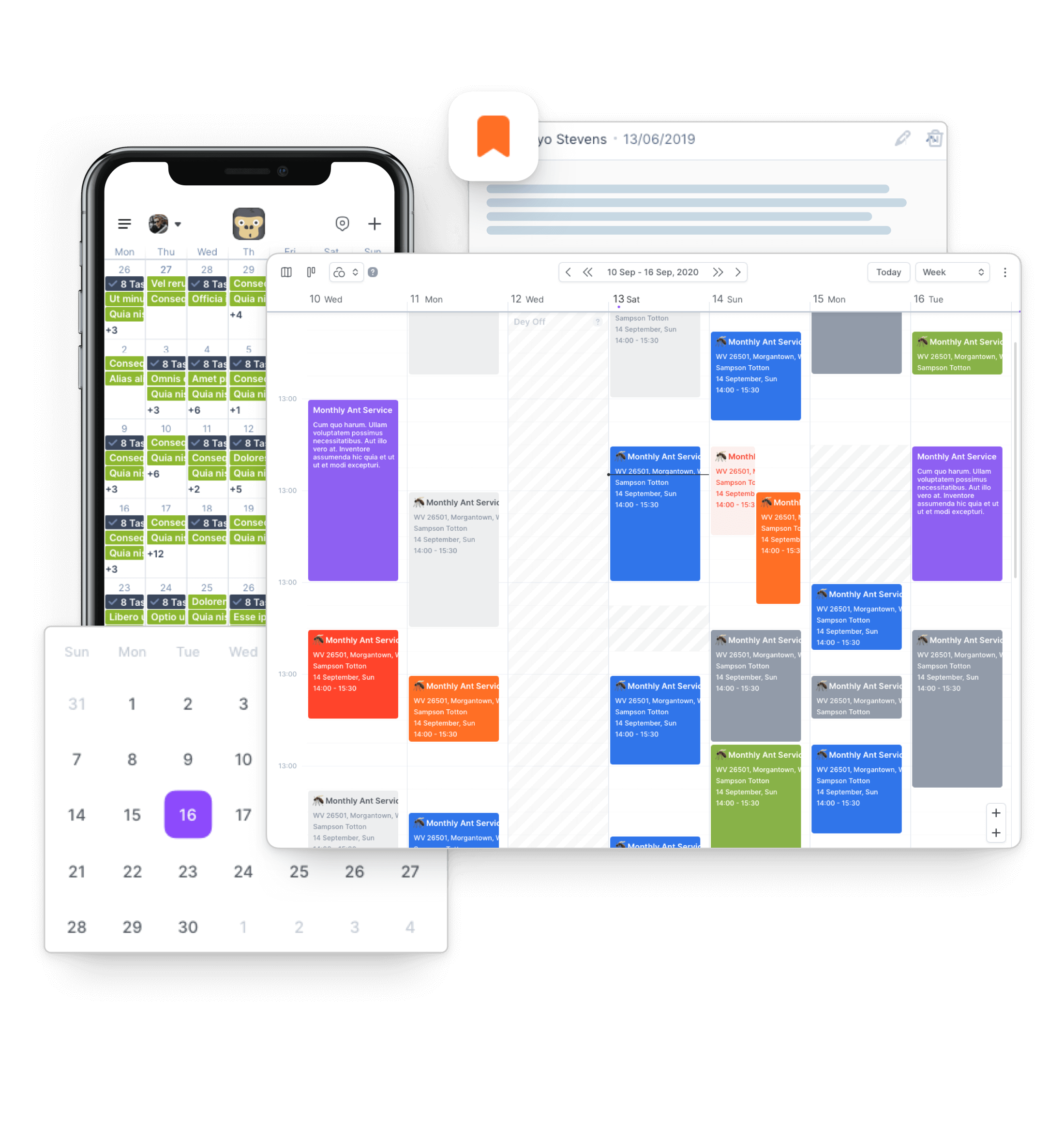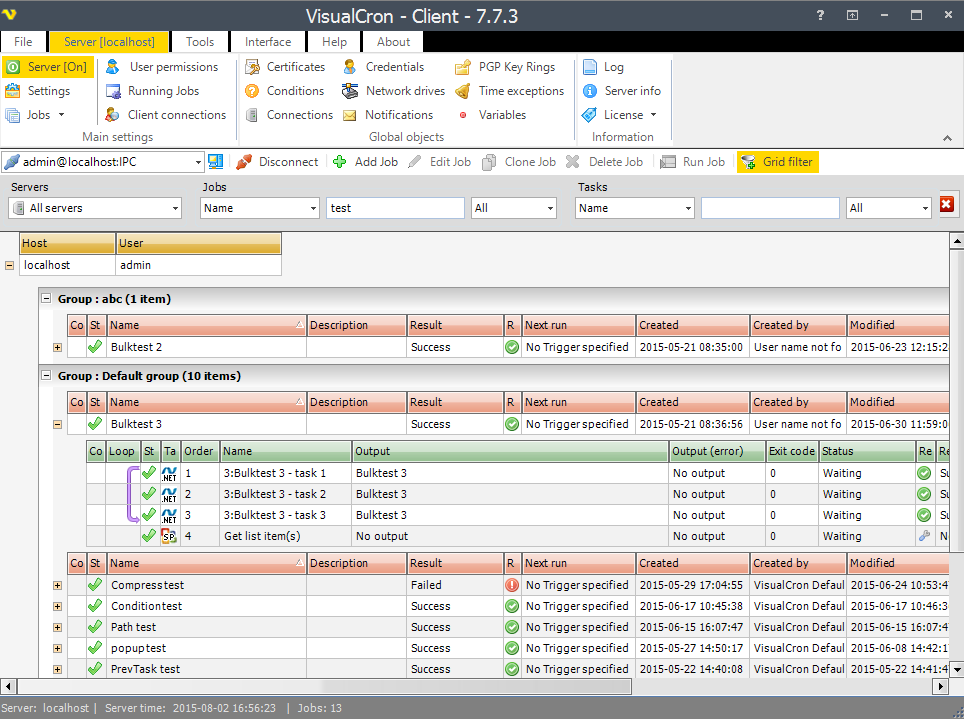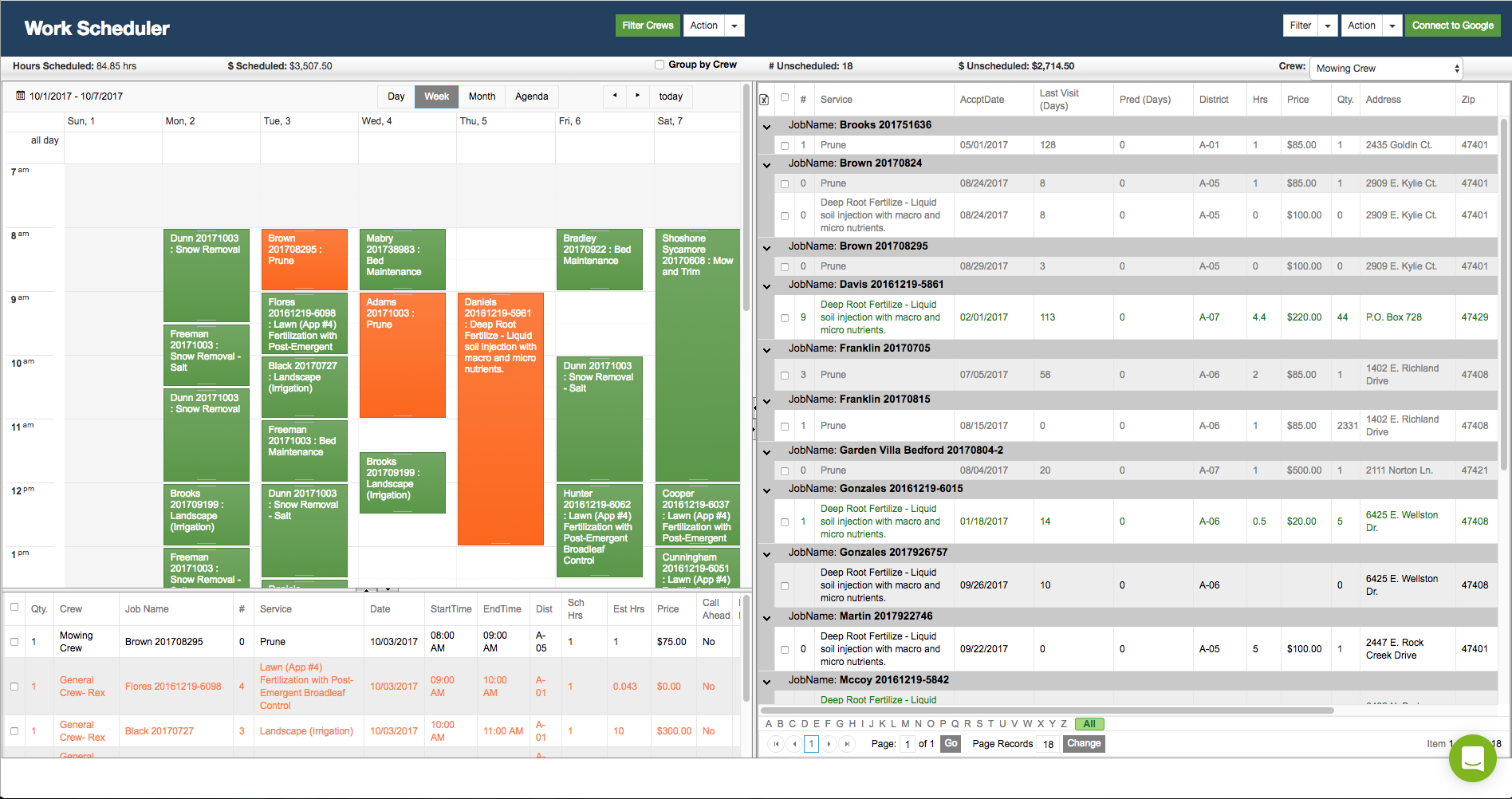Job scheduling software helps businesses manage tasks efficiently. It automates the planning and execution of jobs.
In today’s fast-paced world, staying organized is crucial. Job scheduling software ensures tasks are completed on time and resources are used wisely. This tool is essential for businesses of all sizes. It reduces human error, increases productivity, and simplifies complex processes.
By automating routine tasks, it allows teams to focus on more important work. Whether you’re running a small business or a large corporation, understanding job scheduling software can transform how you operate. Dive into this article to learn more about this powerful tool and how it can benefit your organization.

Credit: gorilladesk.com
Introduction To Job Scheduling Software
In today’s fast-paced world, managing tasks efficiently is vital. Job scheduling software can help. It organizes and automates tasks. This ensures that projects run smoothly. Let’s dive into what job scheduling software is.
Definition
Job scheduling software is a tool. It automates the planning and execution of tasks. The software schedules jobs based on predefined criteria. It ensures tasks are completed on time. This software is used in various industries. It helps in streamlining operations and improving productivity.
Importance
Job scheduling software is important for many reasons. It reduces manual errors. Automated scheduling ensures accuracy. It saves time. Teams can focus on more critical tasks. This improves efficiency. It enhances resource management. The software allocates resources effectively. This avoids overloading any team member.
Moreover, it ensures deadlines are met. Projects stay on track. This leads to higher customer satisfaction. Clients receive timely updates. They trust the process. Lastly, it provides valuable insights. Reports generated by the software help in decision-making. Businesses can identify areas for improvement.
Key Features
Job scheduling software is essential for businesses to manage tasks efficiently. It helps automate, customize, and optimize workflows. Let’s explore the key features that make job scheduling software indispensable for modern workplaces.
Automation
Automation is a crucial feature of job scheduling software. It allows tasks to run without manual intervention. This saves time and reduces errors. Automated job scheduling can handle repetitive tasks, ensuring they are completed on time. It can also manage dependencies between tasks, making sure that each task starts only when the previous one is finished. This seamless operation boosts productivity and ensures accuracy.
Customization Options
Customization options enable businesses to tailor the software to their specific needs. Job scheduling software offers various settings and configurations. Users can set up custom workflows and rules. This flexibility allows businesses to adapt the software to their unique processes. For example, users can configure alerts and notifications for specific events. They can also customize reports to focus on the most relevant data. These options provide greater control and efficiency.
Types Of Job Scheduling Software
Understanding the types of job scheduling software can help businesses streamline their operations. These software solutions are designed to automate and manage tasks efficiently. They come in two main forms: standalone solutions and integrated systems. Each type offers unique benefits to cater to different business needs.
Standalone Solutions
Standalone job scheduling software functions independently. It does not rely on other software systems to operate. These solutions are often simple to install and use. They focus on specific scheduling tasks. Businesses with straightforward scheduling needs may find standalone solutions ideal. They can be cost-effective and easy to deploy. Smaller companies often prefer standalone job scheduling software.
Integrated Systems
Integrated job scheduling software works within a larger software ecosystem. It connects with other business tools like ERP or CRM systems. This integration allows for seamless data flow. It helps in synchronizing various business operations. Larger organizations often use integrated systems. They benefit from the comprehensive management of tasks and resources. Integrated systems can handle complex scheduling requirements. They provide a centralized approach to job management.
Benefits For Businesses
Job scheduling software has become an essential tool for many businesses. It offers numerous benefits that can significantly improve operations. Below, we will explore some key benefits that businesses can reap from job scheduling software.
Efficiency Improvement
Job scheduling software helps streamline workflows and automate repetitive tasks. This leads to increased productivity and better time management. Employees can focus on more critical tasks without worrying about scheduling conflicts.
Another benefit is the ability to manage resources more effectively. The software allocates tasks based on availability and skills, ensuring optimal use of resources. This reduces idle time and enhances overall efficiency.
Cost Reduction
One major advantage of job scheduling software is cost reduction. Automation reduces the need for manual intervention, lowering labor costs. Businesses save money by minimizing errors and avoiding costly mistakes.
The software also helps in optimizing resource allocation. This ensures that no resources are underutilized or overburdened, leading to better financial management. Improved efficiency and reduced costs result in higher profit margins.
Industries Using Job Scheduling Software
Job scheduling software is essential in many industries. It helps manage tasks, optimize resources, and ensure timely completion of projects. Different sectors rely on this software for efficiency and productivity. Let’s explore how job scheduling software benefits the healthcare and manufacturing industries.
Healthcare
The healthcare industry relies heavily on job scheduling software. Hospitals, clinics, and other medical facilities use it to manage staff schedules, patient appointments, and equipment usage. This ensures that patients receive timely care and resources are used effectively.
Key benefits in healthcare:
- Efficient staff allocation
- Improved patient appointment management
- Optimized use of medical equipment
For instance, job scheduling software helps in assigning shifts to doctors and nurses. It considers their availability and specialization. It also helps in scheduling surgeries and other critical procedures. This ensures that the right team is available at the right time.
Manufacturing
In the manufacturing industry, job scheduling software is vital. It manages production schedules, workforce allocation, and machinery usage. This leads to increased productivity and reduced downtime.
Key benefits in manufacturing:
- Streamlined production processes
- Better workforce management
- Reduced machinery downtime
For example, manufacturers use this software to plan production runs. It ensures that raw materials, labor, and machinery are available. This avoids delays and keeps the production line running smoothly. Job scheduling software also helps in maintenance scheduling. This prevents unexpected breakdowns and ensures machinery is always operational.

Credit: www.visualcron.com
Selecting The Right Software
Choosing the right job scheduling software can be daunting. The software must fit your business needs. This section will help you make an informed decision.
Assessment Criteria
Evaluate each software based on specific criteria. Here are key factors to consider:
- Functionality: Does the software meet your business requirements?
- Ease of Use: Is the interface user-friendly?
- Integration: Can it integrate with other tools you use?
- Cost: Is it within your budget?
- Customer Support: Is support available when needed?
Vendor Comparison
Comparing vendors helps you find the best fit. Below is a table to compare popular job scheduling software:
| Vendor | Functionality | Ease of Use | Integration | Cost | Customer Support |
|---|---|---|---|---|---|
| Vendor A | High | Medium | High | $$$ | 24/7 |
| Vendor B | Medium | High | Medium | $$ | Business Hours |
| Vendor C | High | High | High | $$$ | 24/7 |
Use the table to compare features and make a decision. This will help you find the software that suits your needs best.
Implementation Best Practices
Implementing job scheduling software can transform how your business handles tasks and workflows. To ensure a smooth transition, follow these best practices. Focus on planning and training your team for the best results.
Planning
Start with a clear plan. Assess your current processes and identify pain points. Determine what features you need from the job scheduling software. Create a timeline for implementation. Ensure you allocate resources effectively.
Next, involve key stakeholders. Gather input from managers and employees. Their insights will help tailor the solution to your needs. Create a project team to oversee the implementation. Assign roles and responsibilities to ensure accountability.
Finally, test the software before full deployment. Run pilot programs to identify any issues. Make necessary adjustments based on feedback. This step minimizes disruptions when the software goes live.
Training
Training is essential for a successful implementation. Start with a comprehensive training plan. Include all employees who will use the software.
Use a variety of training methods. Combine in-person sessions, online tutorials, and written guides. This approach accommodates different learning styles. Ensure training is hands-on. Allow employees to practice using the software in a controlled environment.
Provide ongoing support. Offer refresher courses and advanced training sessions. Address any questions or concerns promptly. Encourage a culture of continuous learning.
Consider creating a training schedule. Here’s a simple example:
| Week | Training Activity | Participants |
|---|---|---|
| 1 | Introduction to Software | All Employees |
| 2 | Hands-On Practice | Department Teams |
| 3 | Advanced Features | Key Users |
| 4 | Feedback and QA | All Employees |
By following these best practices, your business can make the most of job scheduling software. Effective planning and training ensure a smooth and successful implementation.

Credit: arborgold.com
Future Trends
As technology advances, the landscape of job scheduling software evolves rapidly. Businesses need to stay updated with future trends to optimize their workflow. Here are some emerging trends shaping the future of job scheduling software.
Ai Integration
AI is becoming more involved in job scheduling. It helps automate tasks and predict the best schedules. AI can analyze large data sets quickly. It identifies patterns and suggests improvements.
AI-driven job scheduling software can adapt to changes in real-time. This reduces downtime and enhances productivity. Machines learn from past data to optimize schedules continually.
Cloud-based Solutions
Cloud-based job scheduling software is gaining popularity. It offers flexibility and scalability. Businesses can access their schedules from anywhere. This is crucial for remote work environments.
Cloud solutions also provide better security. Data is stored in secure, off-site locations. This reduces the risk of data loss. Regular updates ensure the software remains current and effective.
Cloud-based solutions also allow for easy integration. Businesses can connect various tools and platforms. This creates a seamless workflow and enhances overall efficiency.
Frequently Asked Questions
What Is Job Scheduling Software?
Job scheduling software automates the planning and execution of tasks. It ensures tasks run at predefined times, boosting efficiency and reducing manual errors.
How Does Job Scheduling Software Work?
Job scheduling software uses algorithms to assign tasks. It schedules and monitors jobs, ensuring timely execution and completion, thus optimizing workflow.
Why Use Job Scheduling Software?
Job scheduling software enhances productivity by automating repetitive tasks. It minimizes errors, saves time, and ensures task consistency across various processes.
What Are The Benefits Of Job Scheduling Software?
Job scheduling software improves efficiency, reduces manual errors, and saves time. It allows businesses to automate complex workflows and ensure timely task completion.
Conclusion
Job scheduling software simplifies task management for businesses. It helps allocate resources efficiently. Teams can track progress easily. Deadlines become manageable. The software reduces errors and saves time. It improves productivity and ensures tasks are on track. Small and large businesses benefit from it.
Start using job scheduling software today. Your operations will become smoother. Understanding job scheduling is crucial. It enhances overall workflow. So, consider integrating it into your business processes. Your team will appreciate the organization. And your business will thrive.

